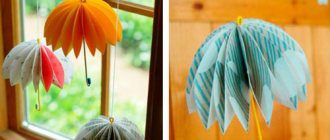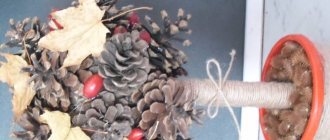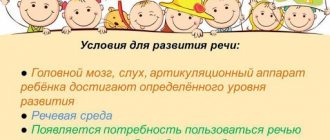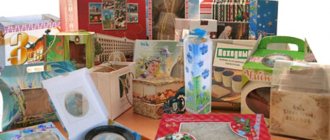Summary of GCD in the preparatory group for designing from small building materials
Topic: “Bridge over the river for pedestrians”
Program content: Teach children to build a bridge, taking into account the given conditions. Teach a new method of construction design: building floors on high abutments. Continue to teach how to observe symmetry when designing buildings. Develop children's creative abilities. Continue to develop children's coherent speech in stories about the sequence of construction. Cultivate interest in activities with building materials.
Equipment: a set of small building materials for each child, photographs and pictures depicting various types of bridges, diagrams, drawings, a model of the construction sequence, toys for playing with.
Progress of the lesson I. Children sit in a semicircle on chairs. There is a stand in front of them. On the stand are photographs of illustrations depicting various types of bridges. — Tell me, guys, what river was our city Severodvinsk named after? (Northern Dvina).
- Right. Our city and many other cities and villages of the Arkhangelsk region are located along the Northern Dvina River. The Northern Dvina is a wide and beautiful river. Motor ships, barges and other river vessels sail along it. It happens that two villages are located on different banks of the river opposite each other. How can you help people meet and communicate? (you need to build a bridge) - Yes! A high bridge is required so that river boats can pass under it. —Who will walk on the bridge? Ride? (pedestrians, cars).
Also an interesting lesson on design: Notes for a lesson in the preparatory group on design at a preschool educational institution. Lightweight construction.
— So the bridge should be narrow or wide? (wide) - How many roads will there be on the bridge? (three). One is pedestrian, two are roadways. — Why two roadways? (so that cars don’t collide when going in different directions). — In order for pedestrians to descend from the bridge, what needs to be built? (stairs)
- Where? (to the right and left of the ceilings) - What will we build for the cars to go down? (descent) - And so that cars drive onto the bridge? (entry) - And for safety? (railing)
— Now I will show you how to build the most difficult part of the bridge: a platform on high abutments (showing diagrams and drawings, explanations). The abutments can be made from any high parts. – Which ones should you suggest? (bars, cylinders). If the platform needs to be raised even higher, then cubes can be placed under the cylinders or bars. To make the foundations strong, you can press them with prisms. The abutments need to be connected by three long plates - this will be the bridge platform. You already know how to build descents, stairs and entrances. And the railings can be built from any parts. The main thing is that they are the same on the right and left sides of the bridge and decorate your bridge.
- Tell me, Sasha, where will you start your construction, how will you continue and how will you finish? (based on the model, three or four children talk about the construction sequence).
II. Physical education lesson We are strong builders / flexion and extension of arms at the elbows, towards the shoulders. We raise the bricks / hands up to the shoulders We put the prisms on the cubes / sit down, stand up - bend forward And the cylinders on the bars Build, build a new bridge / knock fist on fist The work of builders is not easy. / Shake your head to the sides
Children sit at tables and begin to build. As construction progresses, the teacher gives advice, provides assistance, prompts, asks leading questions, and clarifies.
- Take the ship, Alyosha, and you will be able to determine the height of the foundations. — Ira, what parts do you want to build a staircase from? What about the descent and entry? - Look, Maxim, do you have the same railings on the left and right sides of the bridge? Which parts are best to replace?
Children stand around the tables and walk around all the buildings.
Look, children, what wonderful bridges we have made. Now residents of two villages on the left and right banks of the Northern Dvina will definitely meet.
Tell me, Vlad, which bridge did you like best? Why? What about you, Artem? Why? And Katya?
But even heavy trucks will be able to cross this bridge, because it is very durable. You can stand on this bridge and admire the river. There are such elegant railings here. It will be safe for pedestrians to walk across this bridge, because... the railings are strong. Even an elderly person can climb this bridge, the steps here are so comfortable.
Well done boys! You've worked hard, now let's play together with your buildings.
Title: Summary of direct educational activities in the preparatory group on designing from small building materials Nomination: Kindergarten, Lesson notes, GCD, design and manual labor, in the preparatory group Author: Konash Natalya Vladimirovna Position: teacher of the highest qualification category Place of work: MADOU Kindergarten No. 77 “Zorenka” Location: Severodvinsk city, Arkhangelsk region
Date modified: 04/02/2016 Date of publication: 04/02/2016
"Bridge". Abstract of GCD for design in the senior group
Abstract
directly educational activities
«Bridges»
Tasks:
bridge structures of different sizes
,
independently
selecting the necessary building material. Expanding ideas about the world of adults.
Developmental: Development of constructive
skills and abilities in the construction of beautiful, durable, sustainable buildings. Development of fine motor skills of hands, attention, observation.
Educational: Cultivating accuracy and independence
, culture of verbal communication with peers. Encourage the ability to plan your activities. Fostering friendly relationships between children.
Vocabulary: bridge builders
,
bridge
,
walkway
, supports, ramps, canvas, fire, police,
ambulance
.
Preliminary work: conversations, excursions to the bridge
, observing cars, memorizing poetry.
Material: horse toys, dolls for girls and boys, special cars for each child, building material, tape recorder.
Techniques: immersion in a game situation, riddle, questions, examination, practical activity, poetry reading, research activity, search and play activity.
Educational areas: " Artistic creativity"
,
"Safety"
,
"Socialization"
,
“Cognition”
,
“Communication”
,
“Reading fiction”
,
“Music”
.
Progress of direct educational activities
— I ask the children a riddle: “I lie over a river, I hold both banks”
( bridge ).
I propose to answer the question: Are
bridges built
?
( different : high - low, wide - narrow, long - short)
.
— Today you are all builders, but not just builders, but bridge builders
who will build different
bridges
.
-What is the name of this building? ( bridge , bridge )
.
Why? That's right, this is a bridge over a wide stream
.
Name its parts (supports, canvas, slopes)
.
What parts are they made of? (supports made of cubes, canvas made of plates, ramps-bricks)
.
Why is the bridge short
?
(only one canvas)
Build each of the same
bridges
.
( Children's independent activities )
.
— Sasha, read the poem, and we’ll play.
“Our horse trampled, indulged
And our bridge began to shake
.
Wait a minute, don't be naughty
You go home, my horse, run."
- Children, think about what the bridge
across a wide and deep river?
Why? How to make our bridge longer
?
(add another canvas and one support)
.
How can we make our bridge higher
?
(replace the cubes with low bars, they are taller than the cubes)
.
Count how many layers are needed (two, and what about bars for supports? (three)
- Building a bridge
across a wide and deep river.
( Children’s independent activities )
- Varya, read the poem, and we’ll play.
"This is my doll
walking across
,
To all passersby she
Helps you find your way"
- Now children, imagine such a bridge
, along which two cars are driving at once, towards each other.
Below is a railway with trains passing through it. What should the bridge
?
Why? How to change our bridge
?
(replace low bars with high ones, add plates to make the bridge wider
)
— Count how many plates you need for the bridge (four)
— How many bars for ramps (six)
- Well done! We are building a new bridge
.
(Independent activities of children)
.
— Maxim, read the poem, and we’ll play:
“The red car is rushing along the road,
She needs to appear at the place as soon as possible.
There is fire to extinguish the avalanche,
Everyone calls the red fire truck."
— What special machines do you know? "Ambulance"
, fire, snow removal, watering, police.) What are these machines for?
(To help people.)
Why do they also call
an ambulance
?
(To help victims of burns and smoke during a fire.)
Do cars driving with the siren on stop at the traffic lights
(No.)
Why?
(They rush to help people.)
Name them.
( "Ambulance"
, fire and police.)
So you became bridge builders
.
Did you like building different bridges
?
Now let's all play together.



